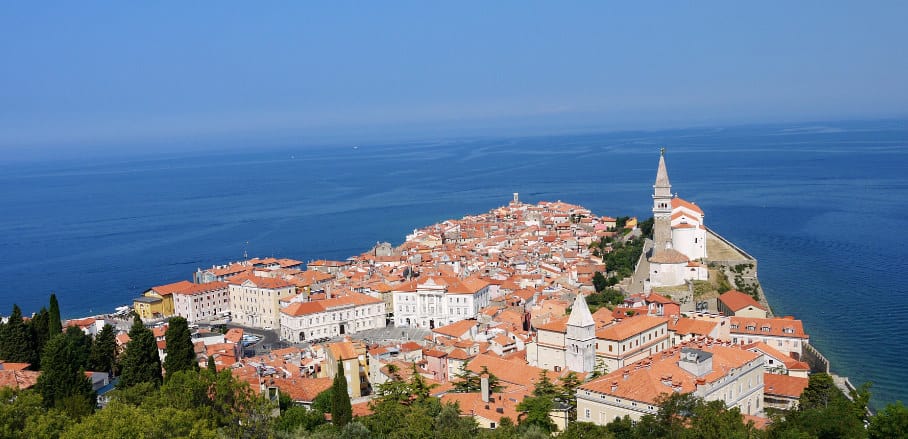Nature Will Guide You: Co-Creating Nature-Based Solutions in European Coastal Cities
Nature provides us with built-in solutions to some of the most pressing global issues. Laura Quadros Aniche and Rochelle Caruso discuss what Nature-Based Solutions involve and present an innovative project with partners in 12 different countries across Europe.
Cities are the place of the future. According to UN projections, by 2050, 68 per cent of the world’s population will be urban. Accounting for population growth and urbanisation rates, this means the addition of 2.5 billion people to cities, increasing challenges for sustainability and development. Climate change adds another layer of complexity and increases the scale of threats from rapid urbanisation. The need to make urban living more sustainable is therefore pressing.
Using Nature to Address Our Challenges
Luckily, nature has built-in solutions to these challenges and provides multiple benefits that are essential for sustainable cities. The use of nature to address said challenges, for example, flooding or sea-level rise, are called Nature-based Solutions (NbS). NbS are solutions inspired by nature and use nature to address societal challenges, such as climate change. For example, rather than building a concrete wall to stop sand dune erosion, native grasses can be planted to combat loss caused by rising sea levels.
According to the International Union of Conservation of Nature, NbS aim to address seven social challenges: climate change mitigation and adaptation, disaster risk reduction, economic and social development, human health, food security, water security, environmental degradation and biodiversity loss. Therefore, NbS are typically resource-efficient and provide major economic, social, and environmental benefits.
Co-Creation Is At the Centre of NbS
Embedded in the NbS approach is co-creation and the inputs of different stakeholders to ensure that holistic and sustainable solutions are developed. The relevant stakeholders for NbS exist at three different levels – the macro, meso, and micro level. The macro level represents the institutional context; actors include regional and national governments and international organisations. On the meso level, actors such as municipal departments are key to initiating, monitoring, and supporting NbS implementation while providing access to land and financial resources, bearing in mind the local long-term vision. Micro-level actors are the primary beneficiaries and hold the necessary contextual knowledge and experience. Here we find citizens, users, land and business owners, NGOs, and communities.
Although the NbS approach has been largely applied in the past decades, there are still multiple challenges, especially with regard to enhancing and harmonising the knowledge and evidence base on NbS. For example, there might be a lack of knowledge and skills among actors in designing, implementing, and maintaining NbS; there are also challenges in quantifying benefits or in finding a common understanding among stakeholders. However, increased utilisation and research seek to better understand NbS and its usefulness in the fight against climate change. One pioneering project that is trying to find innovative solutions while addressing some of the known challenges is the Smart Control of the Climate Resilience in European Coastal Cities (SCORE) project.

Map of all Coastal City Living Labs (CCLLs) in the SCORE project. © SCORE EU Project
NbS in Practice: Smart Control of Climate Resilience in European Coastal Cities
SCORE, a Horizon 2020 project, is aiming to increase climate resilience in European coastal cities by applying an innovative approach to tackle specific challenges related to sea levels, coastal erosion, and extreme weather events. SCORE outlines a co-creation strategy, developed via a network of ten living labs across seven different countries, to rapidly, equitably, and sustainably enhance resilience, utilising a combination of NbS and smart technologies.
SCORE utilises Coastal City Living Lab (CCLL), which is a newly established approach that expands the living lab concept to coastal cities, addressing climate change adaptation and resilience. By definition, living labs are open (urban) innovation ecosystems in real-life environments based on the very crucial aspect of co-creation. They integrate research and innovation activities in local communities and actively involve stakeholders (including citizens) to co-create, implement, test, and evaluate innovations in real-life situations.
Combining NbS with Living Labs
So why mix NbS with a living lab concept? The focus of both NbS and living labs is on addressing societal challenges through a participatory approach. SCORE’s Coastal City Living Labs aim to address NbS’ technical challenges and knowledge gaps by establishing a collaborative atmosphere fostering exchange and dissemination. This exchange can occur within each local CCLL, across the SCORE’s CCLL network, and beyond the project. Through CCLLs and smart technologies, the project will not only prove the technical feasibility of NbS in real-life settings but also demonstrate the socio-economic viability of NbS prototypes, thus accelerating their systematic adoption.
When establishing a Living Lab, there are three main phases: the Problem Space, the Solution Space, and the Deployment Space. After wrapping up the first year of the project in 2021, SCORE’s CCLLs have now concluded the Problem Space. Upon reflection on year one, it has become clear that while each CCLL is unique in its own challenges and local circumstances, there are a lot of similarities even in different countries. These similarities in terms of challenges and drivers validate SCORE’s focus on a collaborative environment as the CCLLs can collaborate, ensuring that no living lab feels isolated in their experiences.
Key Lessons
The key lesson learned thus far is that the establishment of the CCLL is a slow and continuous process, particularly due to the need for diverse stakeholders across the three levels. Allowing time to build relationships within the local communities with differing groups is essential to exploring NbS and living lab implementation. Luckily, as the CCLLs are tackling local challenges, there are keen stakeholders willing to give their time and input when they feel valued and aligned with the overall project goals. As SCORE moves into the Solution Space, the CCLLs will begin working to identify the most relevant NbS for their locality and needs, in the pathway towards a more resilient coastal community.
